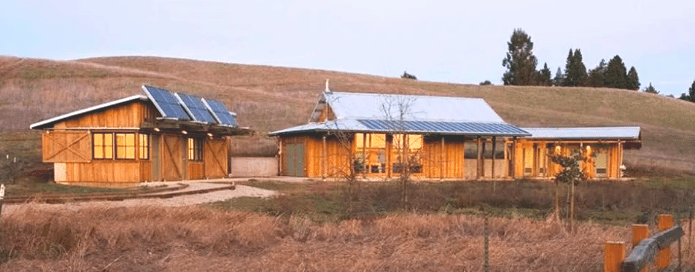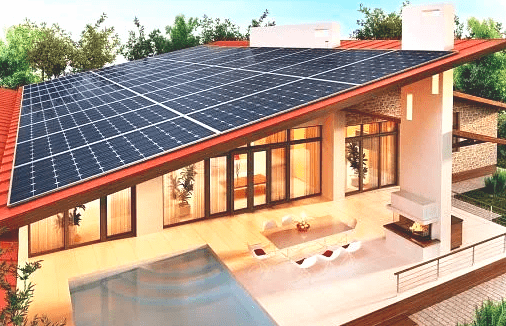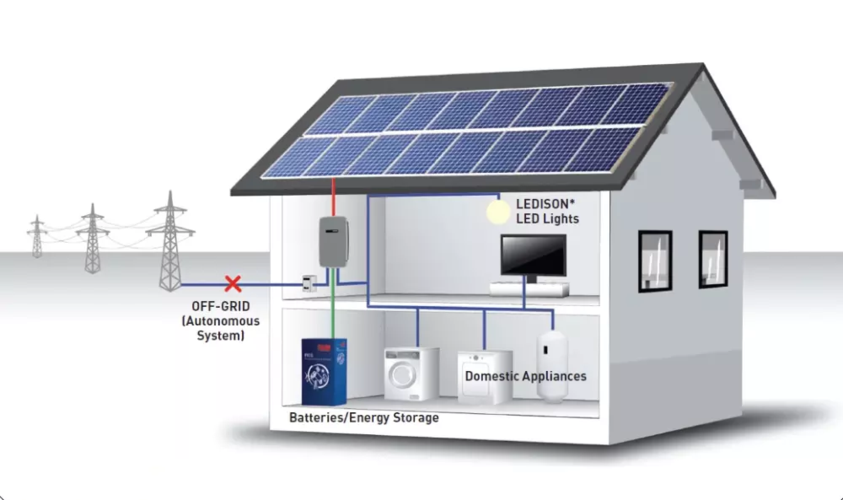An off-grid solar power system provides direct electricity to your electrical devices using battery storage of solar energy generated throughout the day, without relying on the utility grid. Off-grid solar power systems are a popular choice in areas with power shortages. Once you install an off-grid solar power system, you primarily rely on that system for electricity, without depending on the utility grid.
People choose off-grid solar power systems because the overall cost of solar panels, inverters, battery storage, and other Green Power products is lower than the cost of extending power lines to the main grid, and it reduces dependence on utility companies to meet their own needs. If you live in a remote area where access to the utility grid is not possible, off-grid systems become your only option for generating electricity. The system powers your home directly from solar energy, eliminating the need for reliance on local utility companies.

This guide will help you understand the essentials of off-grid solar power systems, including how they work, their costs, and other relevant details. Keep reading for more in-depth information.
What is an Off-Grid Solar Power System?
An off-grid system is a solar power system that is not connected to the utility grid, whereas a system connected to the utility grid is referred to as an on-grid system. Off-grid systems typically consist of components such as solar panels, inverters, battery storage, and more. Off-grid systems are suitable for individuals who desire self-sufficiency and independence from utility-powered electricity. Additionally, off-grid systems provide a power solution for remote areas such as mountain cabins, where access to the utility grid is often unavailable, while solar energy can fulfill their energy needs.
When someone chooses an off-grid system, it means they desire autonomy without relying on services provided by power companies. Fortunately, off-grid solar power systems enable them to achieve this goal. Additionally, solar power systems reduce energy costs and allow homeowners to have better control over energy usage. The electricity used by homes powered by off-grid systems comes entirely from renewable energy sources.

It is important to note that installing solar panels alone does not completely disconnect you from the grid; additional equipment is required to achieve full off-grid capability.
Determining the Scale of an Off-Grid Solar Power System
So, how big should an off-grid system be? This depends on how much electricity your home needs, the available roof space you have, the amount of direct sunlight received by the solar panels each day, and the type of solar panels you choose. As a general guideline, if you want your entire home to rely on solar power, your home will require a 7-kilowatt (kW) solar system. Keep in mind that solar panels come in various sizes and shapes. Additionally, you'll need a place to store the solar energy, such as a solar generator or battery storage. These are essential components of an off-grid solar power system.
There are also on-grid solar power systems that can be connected to the grid and generate power when the utility grid is available, without relying on batteries or energy storage. Panel performance is typically rated using standard test conditions (STC). In general, larger panels tend to have higher performance. For example, if your household demand is 7 kW and you choose 200-watt solar panels, you would need at least 35 panels to meet your energy needs.
Here is an accurate method to calculate the solar panels you need:
Step 1: Retrieve your recent electricity bill and look at your home's energy consumption in kilowatt-hours (kWh).
Step 2: Calculate the hours of abundant sunlight or solar energy received per day based on your roof's orientation. These hours represent the peak times when solar panels are most efficient. For example, if you live in a sunny area, you won't need to consider a larger solar system.
If you reside in an area with less sunlight, your home will require more solar panels. The key is to ensure that the solar panels generate enough energy to meet your home's optimal power requirements. On average, the peak sunlight hours range around 1,000 watts per square meter.
Step 3: Calculate the hours of adequate sunlight or solar energy received in a month. Multiply the daily hours by 30, then divide by 1,000 to obtain the result in kilowatt-hours. For example, suppose you receive 5.44 hours of peak sunlight time per day. Multiply that by 30, which equals 163.2, round it to 163. Then divide 1,000 by 163, resulting in 6.1. Therefore, your home would need a 6.1-kilowatt (kW) solar system.
Step 4: Multiply the obtained number by 1,000, resulting in 6,100 watts (W). Assuming you choose 200-watt solar panels, divide 6,100 by 200, which equals 31. Hence, you would need 31 solar panels to meet your energy needs.

Components of an Off-Grid Solar Power System include:
Solar Panels: Any solar system requires solar panels, which convert sunlight into direct current (DC) and feed it into inverters or charge controllers. Ensure you purchase an adequate number of solar panels based on the voltage and power requirements of your designed off-grid solar power system.
Inverter/Charge Controller: These devices allow energy to flow from the solar panels to the off-grid battery, ensuring the battery receives enough power and gets fully charged.
MPPT Solar Charge Controller (DC Power Supply): Maximum Power Point Trackers (MPPT) are DC-DC converters used to optimize the match between solar panels (PV panels) and battery banks or the utility grid. Simply put, they convert the high-voltage DC output from the solar panels to the lower voltage required by the battery.
Battery Storage: Battery storage is used to store the solar energy absorbed by the solar panels and provides stable power to household appliances during the day. Currently, lithium-ion batteries have become the most environmentally friendly, clean, and energy-efficient storage solution globally.
With an off-grid solar power system, you can break free from reliance on the utility grid, provide direct power supply, and use battery storage for solar energy generated during the day. This system is particularly suitable for areas with power shortages and remote regions where access to the utility grid is unavailable. By selecting GREEN POWER photovoltaic panels, inverters, and battery storage products, you can ensure the efficiency and reliability of your off-grid solar system to meet your energy needs.
Post time: Jun-24-2023











